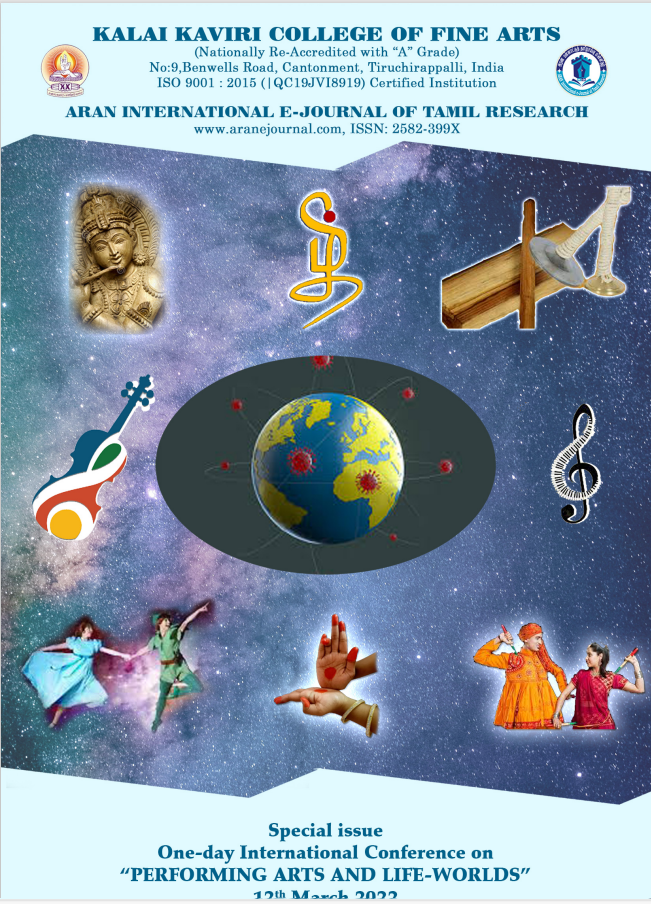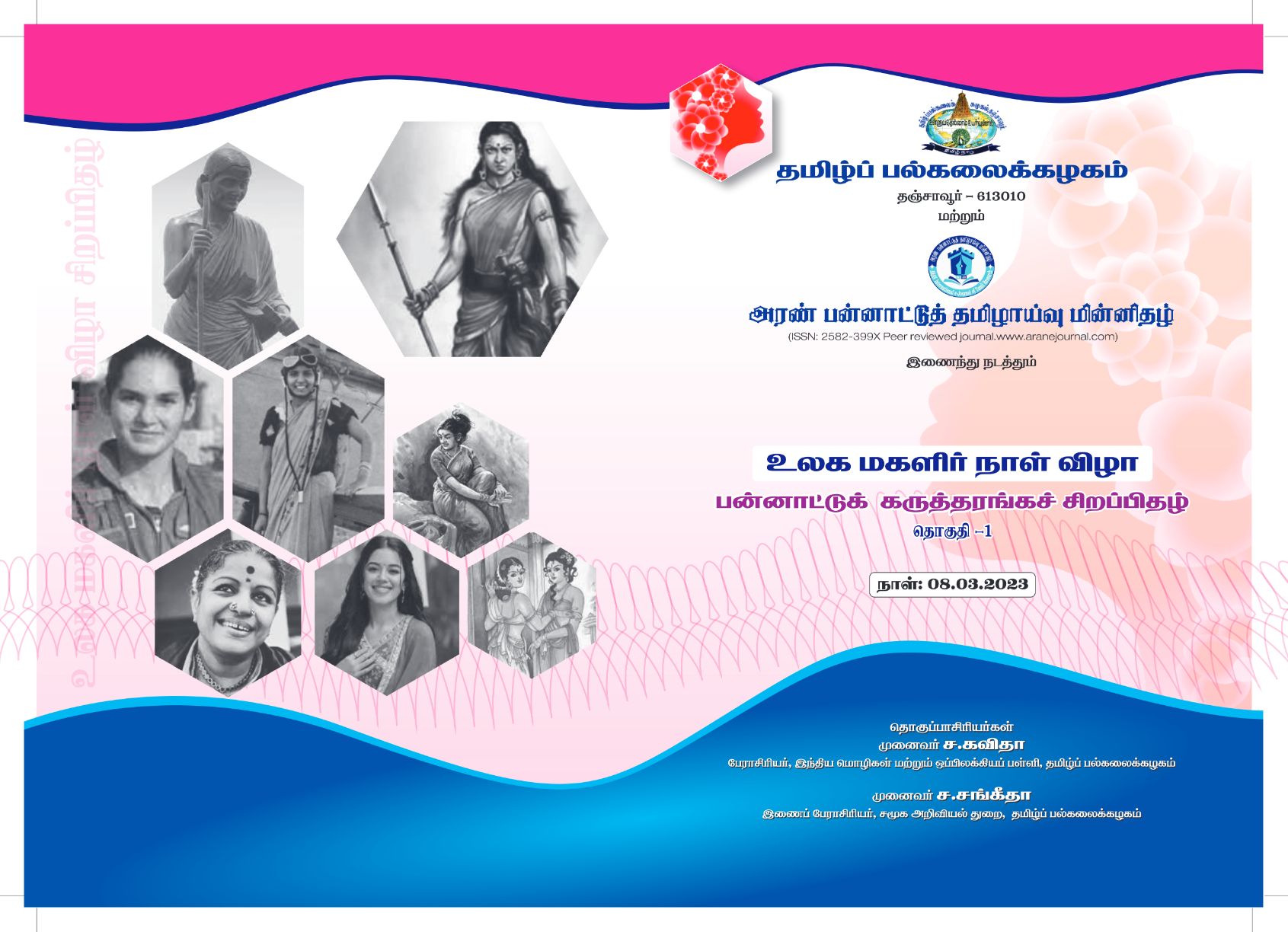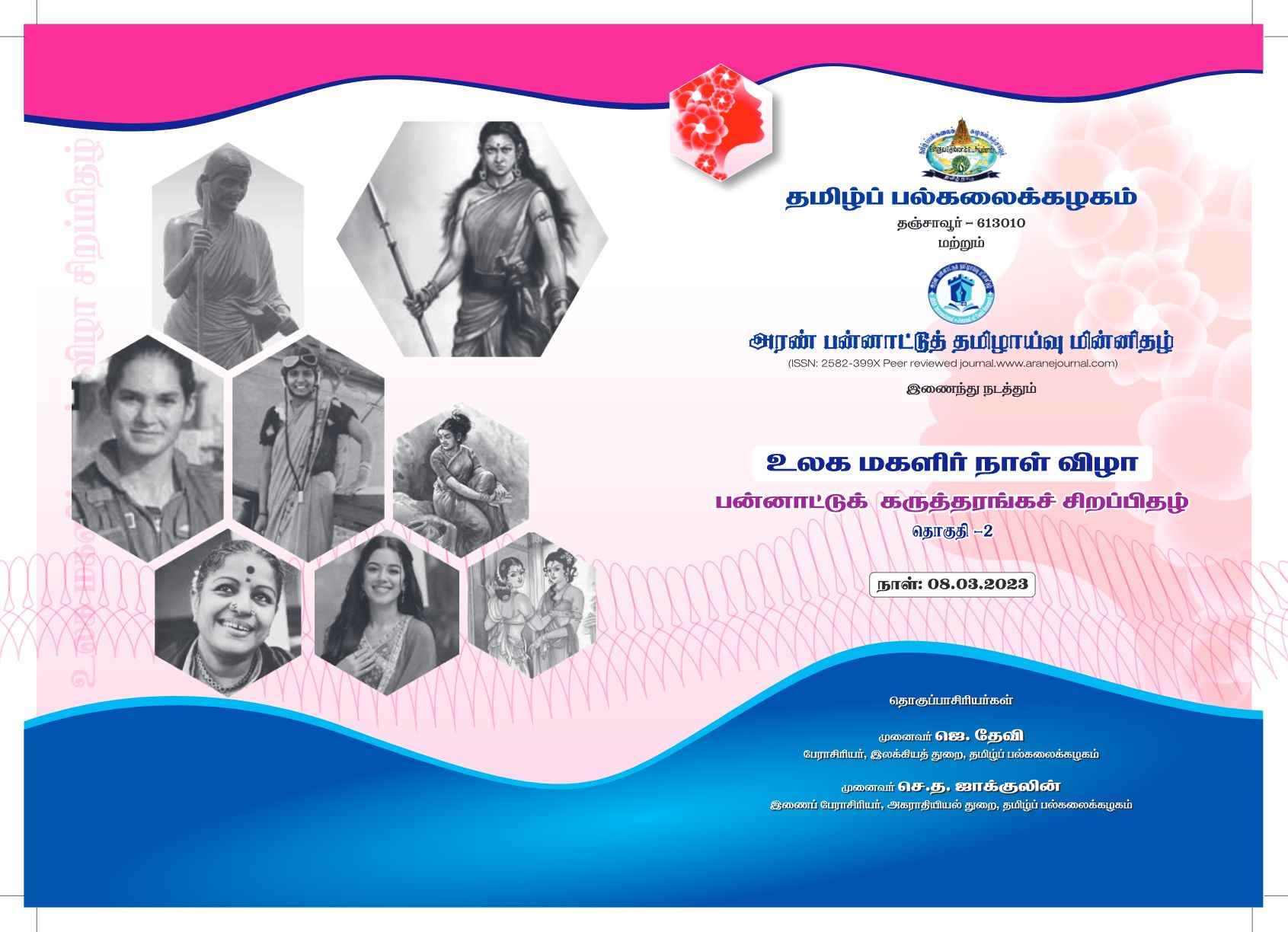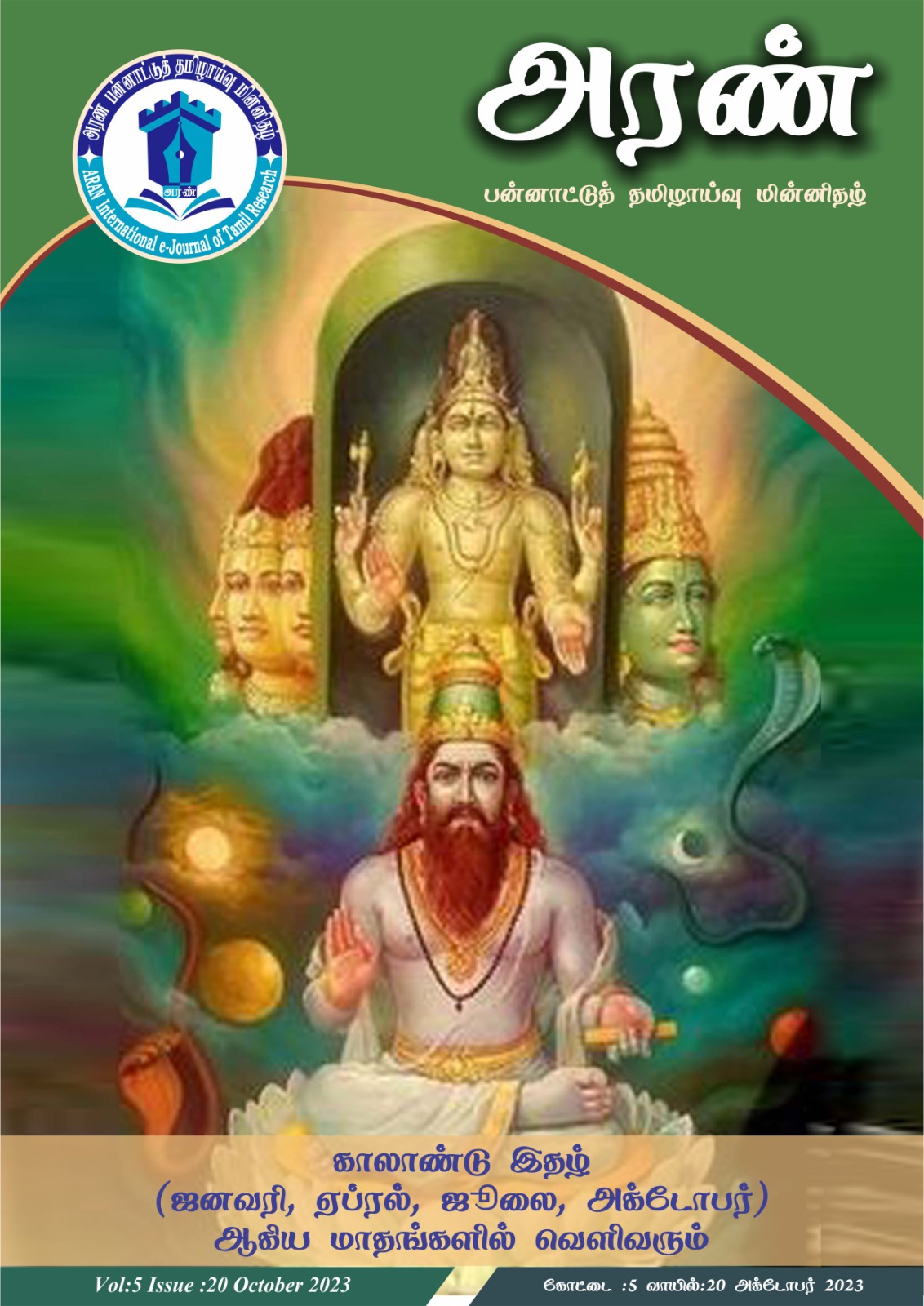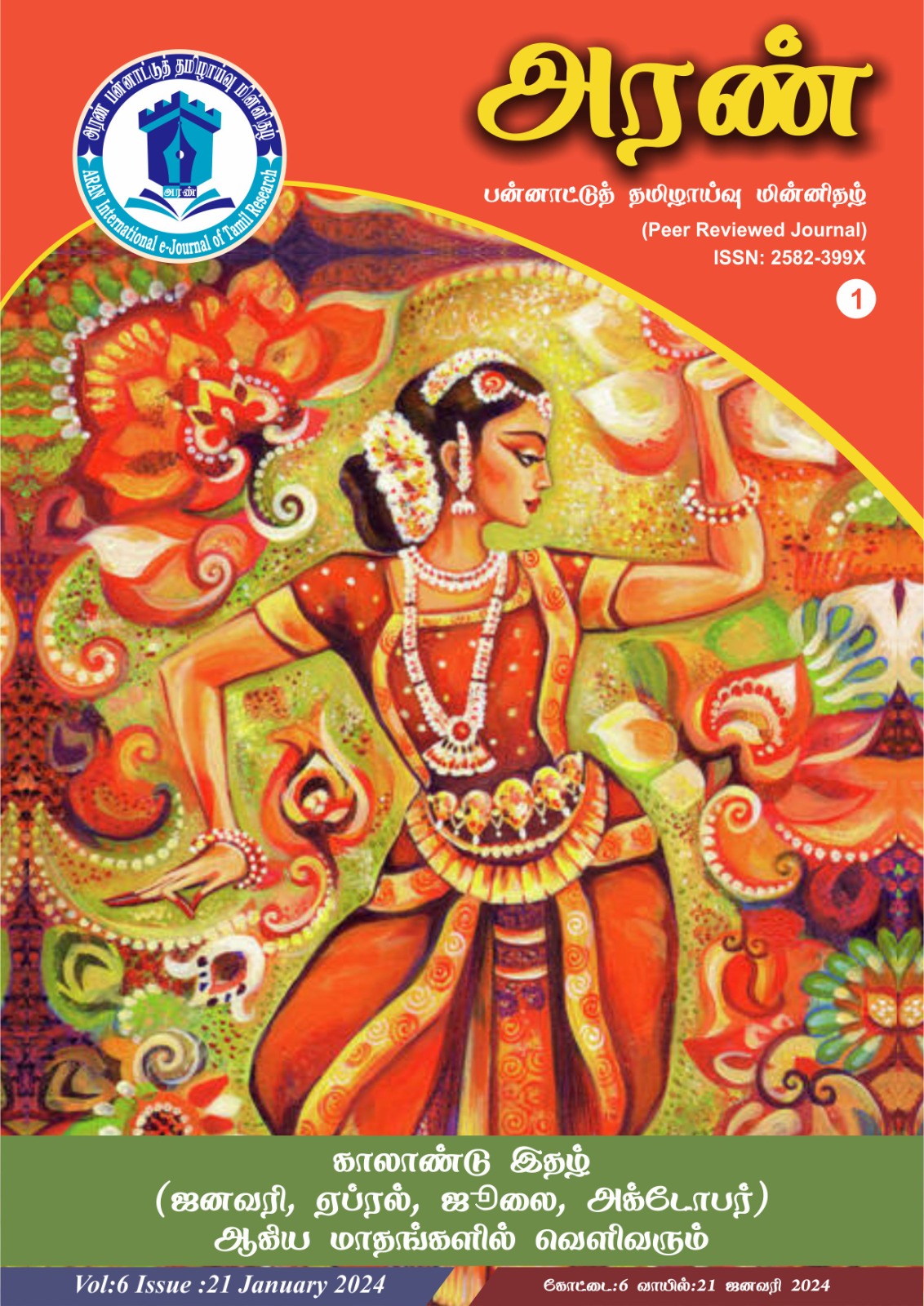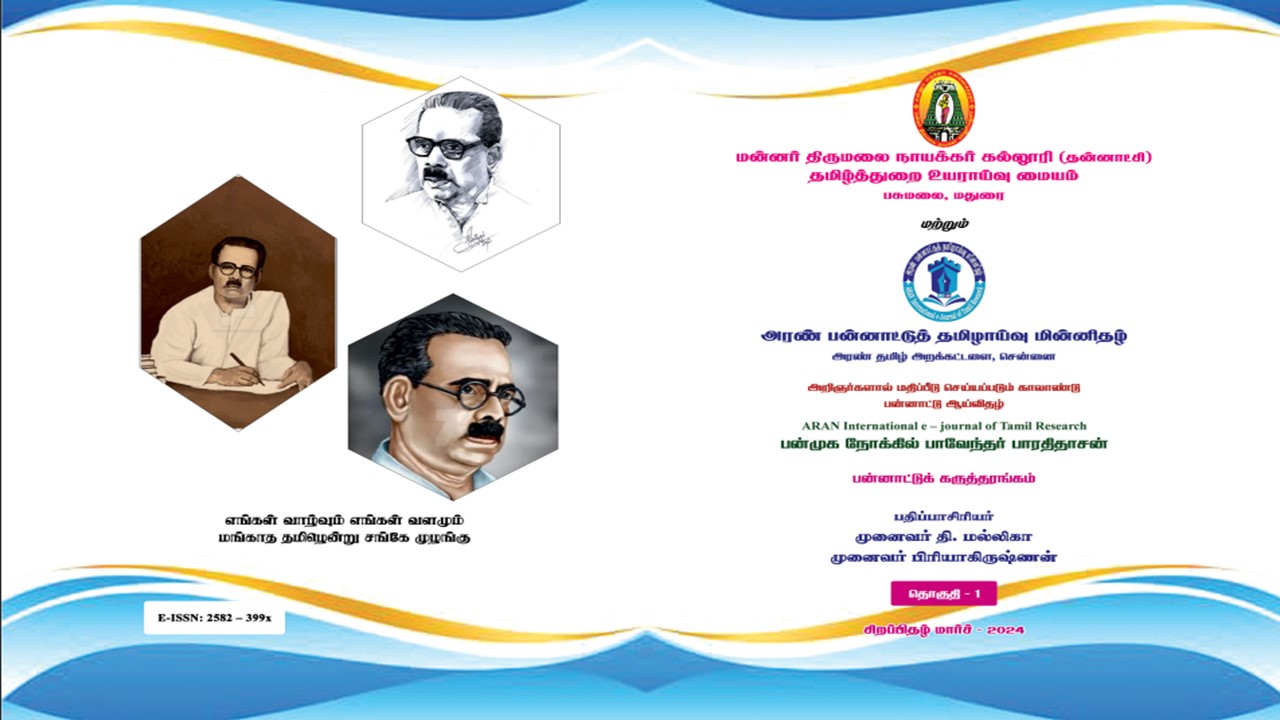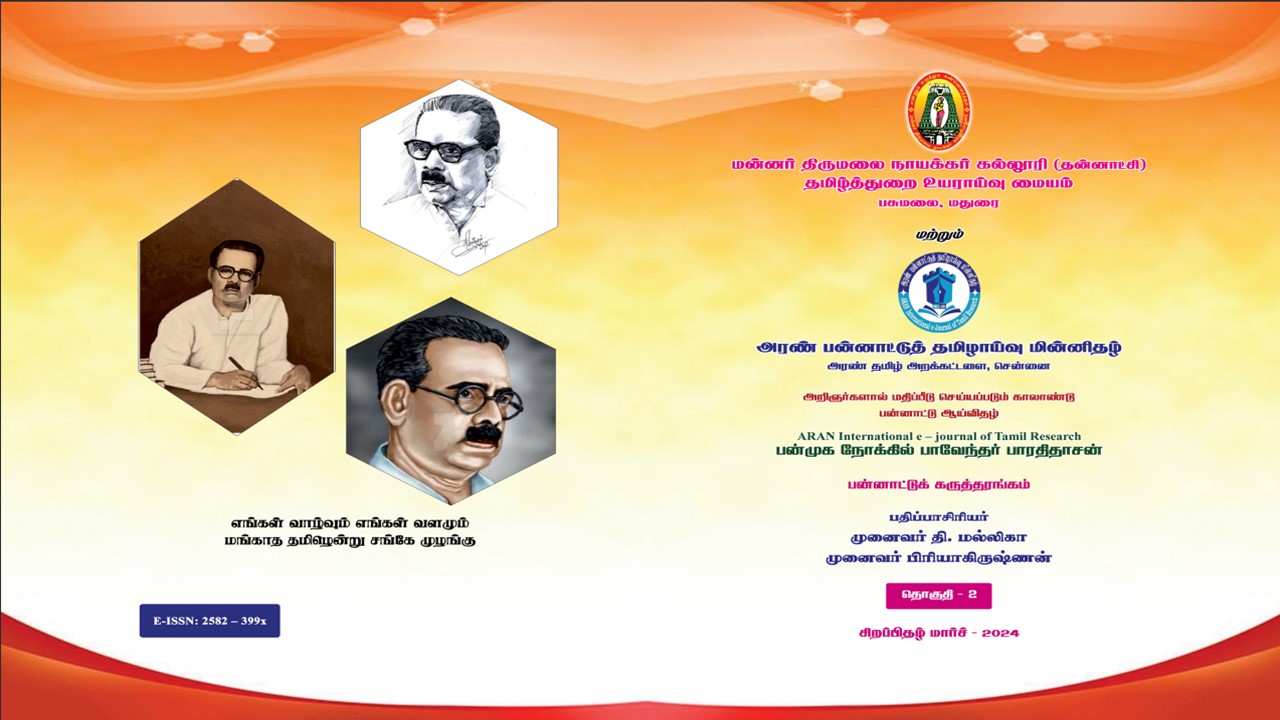Kurinji Life style focused on malasar and kaadar of Anaimalai hills
Dr.G.Vennila,
Assistant Professor of History,
The Standard Fireworks Rajaratnam College for women,
Sivakasi.
About Author:
Worked as Assistant Professor of History in S.Vellaichamy Nadar College, Madurai from 2008 to 2016 and in Fatima College, Madurai from 2016 to 2017.At present working in The Standard Fire Works Rajaratnam College for Women, Sivakasi (11 years of teaching experience).Participated 7 seminars, workshop, conferences.Presented 5 papers of various title in seminars, workshops, conferences.Participated in 6 Faculty development programs. Published 5 papers in research journals . Published 4 papers in International journals
Abstract:
The land of the Tamils, known as Tamilakam in early times, is inhabited by different linguistic groups, yet Tamil is the language of the masses. Based upon the vegetation and fertility of the soil, the entire country is democrated into five areas with their own distinct features – Kurinji or Mountain region, Palai or arid land, Mullai or Pasture land, Marutham or Fertile area watered by streams and Neythal or Coastal belt, washed by the seas. Among that Kurinji has a beautiful location. The lifestyle of the people of Kurinji people was mentioned a lot in sangam literature. In this kurinji hills Anaimalai situated in Coimbatore district has been focused. Malasar and Kaadar are people living in Anaimalai hills. They have their own tradition and life style.
Key Words: Mountain, Kurunji, Hunter, Hillman, Paleolithic
Introduction:
Anaimalai Hills are range of mountains in western Ghats. Anamalai hills situated in Coimbatore district. The people living in the hilly region that is the Kurinji people had their own culture and habits. They never change their tradition and habits. Their religious rituals, entertainments were also differing from other people. All over Tamilnadu almost all the hills the Kurinji people living with their specification. The Malasar and Kaadar are people of Anaimalai hill. They also spread to Nilgiri hills and to some nearest hills.
Mountain:
A Mountain is defined as an upward projection of the Earth’s surface with an altitude of at least 600m. Most major Mountain ranges from where two of the Earth’s plates push together, which is also where most volcanoes occur. The processes that produce mountains are collectively called orogenesis, from oros meaning mountain and genesis to come into being.[i]
There are three types of mountain – fold, fault-block, and volcanic.Weathering and erosion especially by glaciers, gradually break up a range and create individual peaks.Individual mountains that are not part of a range are known as monarchs.
The earth surface is a battle ground between the constant onward force of mountain building and the erosion force of ice, water and gravity. As soon as range forms, weathering begins breaking up the rock surface. Glaciers, rivers and rockfalls all transport this debris away, leaving individual, rocky peaks and ridges, and numerous valleys. Younger range such as the Alps and Himalayas, which began forming around 4.5 – 10 million years ago, are at this stage.[ii] As weathering and erosion continue, the peaks are gradually worn down into rounded hills. This can be seen in parts of Scotland and Canada, where mountains are around 460-390 million years old.
Types of mountains:
- Fold mountains form where layers of folded rock are pushed upwards along the edge of a continential plate as two colide. Most mountains formed this way, including the Alps, Himalayas and Appalachians.
- Fault-block mountainsare formed by the displacement of rock along a fault in the Earth’s crust. The Sierra Nevada in California, the Grand Tetons in Wyoming, and the mountains along the East African Rift Valley formed this way.
- Valcanoes occur along plate margins or at hotspots in the earth’s crust.[iii]
Tamilnadu, the home land of the Tamils, occupies the southern region of India. Traditionally, a range of hills of the Eastern Ghats formed the northern boundary, of the country, the Bay of Bengal the western boundary, the Indian Ocean the Southern boundary and the Arabian Sea the western boundary. Tamil is the popular language.[iv] Ancient Tamils noted that the habitable parts of the earth’s surface were divided into five natural regions; they named each region a tinai. Tinai seems to be derived from a root tin or tit, which means a stretch of land. The word tinai is also used in the sense of the earth in general. The ancient Tamils observed not only that the land surface of the earth consisted of five natural regions, but that manifestation of Human life corresponded to the characteristics of the milieu in which each tribe has grown. The five regions were called 1. Kurinji, the hilly country, 2. Palai, the dry waterless region, 3) Mullai, the wooded land between the highlands and the lowlands 4. Marutham, the lower courses of rivers, and 5. Neydal, the littoral tract, that which skirts the sea. All these five kinds of natural regions are found in the Tamil country, though on a small scale and, as the South India spread from region to region, he developed the stages of culture which each region was calculate to produce.[v]
Anthropologists have noted three great regions as the three great areas of characterization of three different kinds of Human cultures. These kinds of culture have been called the mediterranean, the Alpine and the Nordic, the first two being so named, because the action of the milieu on the evolution of human culture was first understood when the culture of the regions round the Mediterranean sea and the lands on both sides of the Alps were studied and the last , because the third area of characterization was in the north of Eurasia. The Mediterranean culture, to use Tamil terms, is that of Neydal, the Alpine, that of Kurinji, and the Nordic, that of Mullai. The most important, the culture of Marudam, or the lower valleys of rivers, was neglected because Western European having become thoroughly industrialised in the XIX century, the influence of river – valleys on European peoples in ancient days has become masked. Nor is there any desert in Europe as there is a belt of it in Africa and Asia; the desert is the area of characterization of Bedouin life and this, too, has but received scant attention on the part of students of ethnology[vi]. The stages of culture through which man has passed are then five, the hunter nomad, the pastoral, the littoral and the agricultural, the last including the industrial stage; and these correspond to the Kurinji, the Pallai, the Mullai, the Neydal and the Marudam regions. The physical characteristic of each region provided the stimulus for the development of the special culture of that region.
The Hunter:
The earliest region inhabited by south Indian man was the Kurinji, the tracts where stand the low hills resulting from the age-long erosion of the Deccan plateau by the never- failing yearly monsoon rains. Below the hilly regions was the thickly wooded tropical forest, named after the king Dandaka, in which abounded the rivals of early man in the struggle for existence, his big-limbed foes, the lion, the tiger, the elephant, the wild buffalo, the python, as well as the minute insect pests which are even more destructive of Human life than the large animals. In the Kurinji, early man could easily find shelter from the sun and the rain and from his animal foes, behind boulders and within natural caves. He had not then invented pots for storing water, but when the natural spring failed him, he found reservoirs of water in the rocky pits which abounded in the hilly region. The pebble that he could pick up from under his feet served him as a primitive tool; the abundant supply of flints of various shapes stimulated his inventiveness and he learnt to shape the axe-heads, and the spears, the choppers and the scappers that he needed. Hence was evolved in this region the earliest stage of human culture, that are cheifly found in the Kurinji regions which abound in the Cuddapah, Nellore, North Arcot and Chengalput districts[vii].
Early man in Kurinji land at first subsisted on friuts, nuts and tubers. But the variations in the supply of these articles of food due to seasonal changes soon impelled him to add the flesh of animals to his dietary. This fact, more than the necessity for guarding himself against his animal foes, made him an expert huntsman. Hence man’s first professionwas thatof the hunter paleolithic implements all the world over are of the same patterns and this proves that the early hunter was a great wanderer over the surface of the earth.
This environment in the Kurinji regions also led to two other very great inventions of the hunter-stage of human culture, namely the bow and arrow, and the process of making fire. The bamboo grows abundantly in the Kurinji regions of southern India and the Kuravar, as the inhabitants of that land were called, shrewed noted the elasticity of the split trunks of the bamboo, bent them, tied long bits of dried creeper to them and learnt to shoot thence long thorns. This was the origin of bow, in the use of which the Indian hillman has always been an expert, as is proved by the facts that the Indian bowman was a much prized component of the armies of Darius and Xerxes, and the India shikari today can kill a tiger by discharging a single arrow from his bow.
The other invention of the early Kuravar, the greatest of Human inventions, was the making of fire. Early in the paleolithic age, the inhabitants of the Kurinji land noted the origin of forest fires by the violent friction of bamboo stems against one another during the fierce minsoon blow and learnt therefrom that he could start a fire by rubbing together two pieces of wood. The first use to which fire was put was the roasting of the meat of the animals which he hunted.
Hunter women:
While the males of the settlement were out hunting the women were engaged in picking friuts digging for roots, and garnering the seeds of the cereals that greew of their own accord around their places of abode, especially wild rice, bamboo-rice, and panicum.
The other duty of women was to look after their children. Man at this stage of culture did not learn to build houses. They were scarcely necessary, for the South Indian climate was so beneficent that no shelter other than the covert afforded by trees or big boulders or natural caves was needed for protection from sun and rain. Houses were first built by man not so much for shelter as for the storage of primitive wealth in the form of food-stuffs and the early palaeolithic man had not yet feil the need for storing provisions. The necessities of a nomad life and the want of permanent homes did not encourage the free development.
Another circumstance encouraged the formation of this type of life. Primitive man was not encumbered with elaborate forms of marriage rite. Love at first sight and its immediate consummation, followed perhaps very leisurely by a tribal feast, constituted the wedding ceremony. The marriage tie we may take it, was not always of a very permanent character. This cause, and more especially the want of development of personal property and the lack of attachment to a permanent abode, encouraged the persistance of the matriarchate for very long ages.
Love of personal adornment has always characterised men and more especially women. The Kuravar women then as now, spent their leisure moments in picking shells and stringing them together for the pupose of making garlands of them for decorating their persons. Their lovers presented them with trophies of the hunt, like the teeth of the tiger which they shot, and these, worn round the neck, became in much later times the protype of the tali, the pendant attached to a string or a necklace, which is today much prized in South India as the symbol of a wedded woman whose spouse is alive. Another kind of personal adornment was the leaf garment, a number of leaves tied together with a bit of dried creeper and worn round the waist, a custom which still prevails among the most primitive of the hill tribes of South India.[viii]
Malasar:
The Malasar people live in Anaimalai, Navamalai and Amaravathi hills. The people are of two divisions Kattumalasar and Malaimalasar. Kattumalasar think that they were greater than Malai malasar. Kattumalasar doing agriculture but the malaimalasar don’t know agriculture hence they considered themselves greater. Malaimalasar search for food in hills and forest. They were black in colour and short people. They have the habit of drawing tattoo in body. Malaimalasar people were food gatherer. Sometimes if they don’t get any food they don’t have food even for one time. Due to the threatening of Forest department they stop hunting animal and they prefer only vegetables and fruits as their food.
Rituals:
Kattu malasar were the devotees of Palani Lord Muruga. They have fasting and carry Kavadi for Palani Muruga temple. But Malai Malasar has no idea about Palani Muruga.
Puberty Ritual:
The ritual held for puberty attained girl is called as “Therati”. They isolate the girl in separate hut for seven days and then only they were permitted to enter the house. In this therati function they do some rituals at that time musical instruments were played.
Marriage Rituals:
Among this people dowry system prevails in different manner, the bride groom give 277.5 rupees for the groom. But this money varies in different period. The bride groom spend for all things of the bride including dress and all. But among malai malasar people no such rituals are found, just simply village people joined and accept the marriage[ix].
Funeral Rituals:
Dead body was buried. Young people were burned. At the time of aged people death musical instrument was played. But for young people death no musical instrument played.
Art and Culture:
At the time of religious rituals and during Therati and marriage function they play traditional musical instruments. Some musical instruments used by them are Sathakuzhal, Nathasuram, Urumi, Pambai, Thavil, Thambattam. They make their instruments by their own. They train their children from childhood itself to play the instruments with vocal songs[x].
Kaadar:
Kaadar lived in the region of Anaimalai, Valparai, Kadamparai, Udumalai. They were dark in complexion, broad lips, thick hair, thick eye brows, like other kurinji people this people also draw tattoos in their body. Most of the people work in Tea estates around Valparai, Topslip and nearest hills. They have bus facilities frequently. They have matrimonial relation with manampulli, Topslip, Parapikulam, kavarkaal, Udumalai, Kallarai hills Kaadar people.
Religious ceremonies:
Droupathi amman, mariamman, Iyakkan Kaandiyathi, Vanapechi are the women deities. They use bell, lamp, Kunguliyam, Flowers, Camphor for Pooja, they also pray weapons like spear, sword and so. One priest lead all the rituals.
Art and Culture:
They were fond of arts especially playing musical instruments, Dancing. Their Musical instruments are made of Leather. Uddukku, Kendai, Urummi. Udukku used for quiting out the evils. Another instrument called as Krumbu or sindhi used like flute.
Dancing:
They dance for the music of Musical instruments. The female and male dance alone and some times they dance jointly. Kummi danced by women. Kolattam is a dance for both men and women.Oilattam, Panni attam, Manthi attam are some other dances. In panni attam they act like pig and in manthi allam they act like monkey[xi].
Conclusion:
The richly formed mountain has enormous wealth like trees, plants, animals, Birds and Human being. Among them Human being use all the wealth of a hill. The Kurinji people a natural life enjoying all the wealth of the nature. When human beings multiplied in the Kurinji regions and the availed food supply began to shrink, they migrated to the next region, the Mullai or the forest land. By that time they had taken the next great step in the advancement of Human culture, the domestication of animals like the buffalo, the cow the sheep and the Goat , the dog, so useful to the hunter, having already been domesticated in the kuravar stage. But still now in Tamilnadu hill stations they were living an isolated life with it special culture and habitance. The kaadars and Malasar have their own culture and habits. They never change their life style for any purpose.
End Notes:
[i] “Planet Earth and the Universe”, Published by The Reader’s Digest Association Limited”, London. P : 84
[ii] Fred pearce, “Earth then and now potent visual evidence of our changing world”, published by Mitchell Beazley, London. P:113
[iii] “ Planet earth and the Universe”, Op.cit., p: 86
[iv] Prof.K.Rajayyan, “ Tamilnadu A Real History “, Ratna Publication, Trivandrum.p:9
[v] Ibid., P:21
[vi] V.T.Chellam., “ Thamilaha Varalaru”, Manivasagam Publication, Chennai. P: 27
[vii] Dr. A..Swaminathan., “History of Tamilnadu”, Deepa pathipagam, Madras.P.21
[viii] P.T.Srinivas Iyengar, “ History of the Tamils from the earliest times to 600 A.D”, Asian Educational Services, New Delhi.PP :5,6
[ix] Ka.Pa.Aravaanan, “Tamizhar Thadangal Thadumattangal”, Maanavar Maruthondri Achagam.,Chennai. P. 46.
[x] Dr.K.A.Gunasekaran, “Tamizhaha Malaiyina Makkal”, New century book house (p) limited, Chennai.pp:106-109.
[xi] Ibid .pp:111-121.
Book References:
- “Planet Earth and the Universe”, Published by The Reader’s Digest Association Limited”, London.
- Fred pearce, “Earth then and now potent visual evidence of our changing world”, published by Mitchell Beazley, London.
- Dr. A..Swaminathan., “History of Tamilnadu”, Deepa pathipagam, Madras.
- V.T.Chellam., “ Thamilaha Varalaru”, Manivasagam Publication, Chennai.
- Fred pearce, “Earth then and now potent visual evidence of our changing world”, published by Mitchell Beazley, London.
- Dr.K.A.Gunasekaran, “Tamizhaha Malaiyina Makkal”, New century book house (p) limited, Chennai.
- P.T.Srinivas Iyengar, “ History of the Tamils from the earliest times to 600 A.D”, Asian Educational Services, New Delhi.
- Prof.K.Rajayyan, “ Tamilnadu A Real History “, Ratna Publication, Trivandrum.

